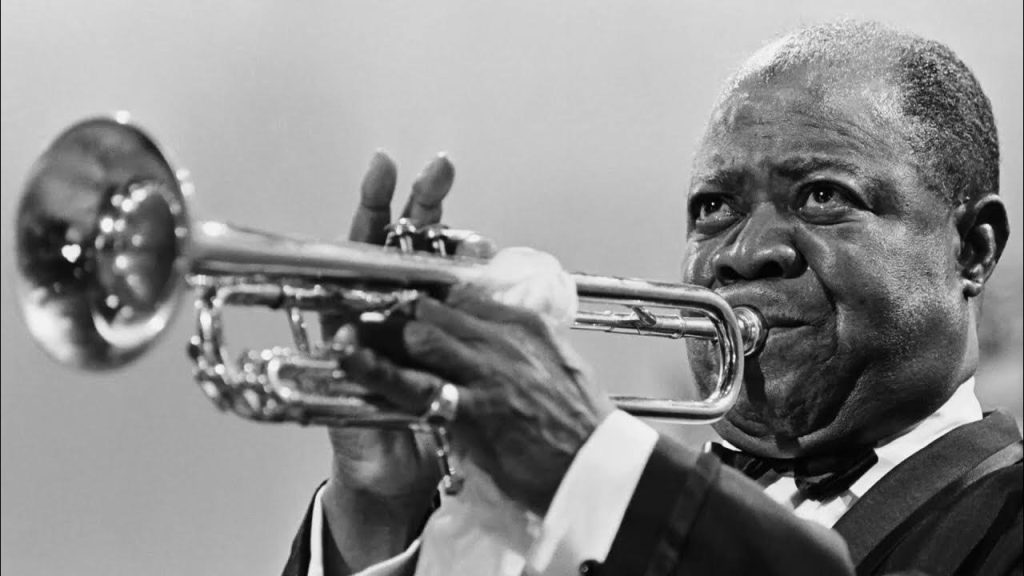
A timeless melody that captures the tender sweetness of seeing life through the lens of love and nostalgia.
Every now and then, we stumble upon a song that gently sweeps us back to those warm, treasured moments of our past, allowing us to relive, if only briefly, the magic of love’s first bloom. One such timeless masterpiece is the heartfelt rendition of “La Vie En Rose” by the incomparable Louis Armstrong. Released in 1950 as part of his album “Satchmo Serenades,” this exquisite interpretation by Armstrong remains a cherished classic, effortlessly transcending generations and musical tastes.
Originally penned in 1945 by French singer Édith Piaf and composer Louis Guglielmi (also known as Louiguy), “La Vie En Rose” had already captured hearts across Europe before Armstrong introduced it to the American audience. Yet, it was Louis Armstrong’s warm, gravelly voice and soothing trumpet melodies that gently carried the song beyond its Parisian origins and into the tender embrace of listeners worldwide. Although Armstrong’s rendition did not immediately top major music charts upon release, its enduring popularity has kept it a beloved staple for decades—widely recognized as one of his signature songs and praised for its heartfelt authenticity.
The story behind this timeless classic is as moving as the song itself. Édith Piaf wrote “La Vie En Rose” during a particularly hopeful time in her turbulent life, inspired by her passionate romance with boxer Marcel Cerdan. The title translates beautifully from French into English as “Life in Pink,” eloquently evoking the rosy hue through which lovers see their world—a perspective filled with boundless optimism, affection, and tenderness. Armstrong masterfully embraced this sentiment in his version, infusing it with a uniquely American jazz flavor while preserving the song’s emotional depth and sincerity.
Louis Armstrong’s interpretation offers a poignant reflection on life’s fleeting yet beautiful moments, enveloping listeners in an atmosphere that feels both intimate and universal. For many of us who have journeyed through life’s seasons, hearing Armstrong croon those gentle lyrics can transport us instantly to evenings filled with whispered promises beneath starlit skies or dances shared on quiet summer nights. It invites us to reconnect with memories we may have tucked carefully away in our hearts—memories we revisit now with nostalgia and sweet melancholy.
In truth, what makes Louis Armstrong’s “La Vie En Rose” so profoundly special is not just its melody or poetic lyricism alone; rather, it’s Armstrong himself—his genuine warmth radiating effortlessly through every note he sings and each soulful trumpet phrase he plays. His performance captures an authentic emotional resonance that resonates deeply within listeners who have experienced life’s myriad joys and sorrows alike.
Today, more than seventy years after its initial release, Louis Armstrong’s gentle rendition of “La Vie En Rose” continues to touch souls young and old alike. For older listeners especially, it serves as a poignant reminder of simpler times—of days when love felt new and dreams seemed endless. Its timeless appeal lies in its ability to remind us all that despite life’s inevitable trials and heartaches, there remains beauty in memories held dear and comfort within cherished melodies.
Indeed, whenever we hear those opening trumpet notes softly drifting through the air once more—accompanied by Satchmo’s unmistakable voice—we are reminded vividly why some songs become eternal companions throughout our lives. In listening again now to Louis Armstrong’s heartfelt performance of “La Vie En Rose,” we find ourselves gently transported back into moments long past yet forever treasured—moments bathed lovingly in shades of rose-colored nostalgia.